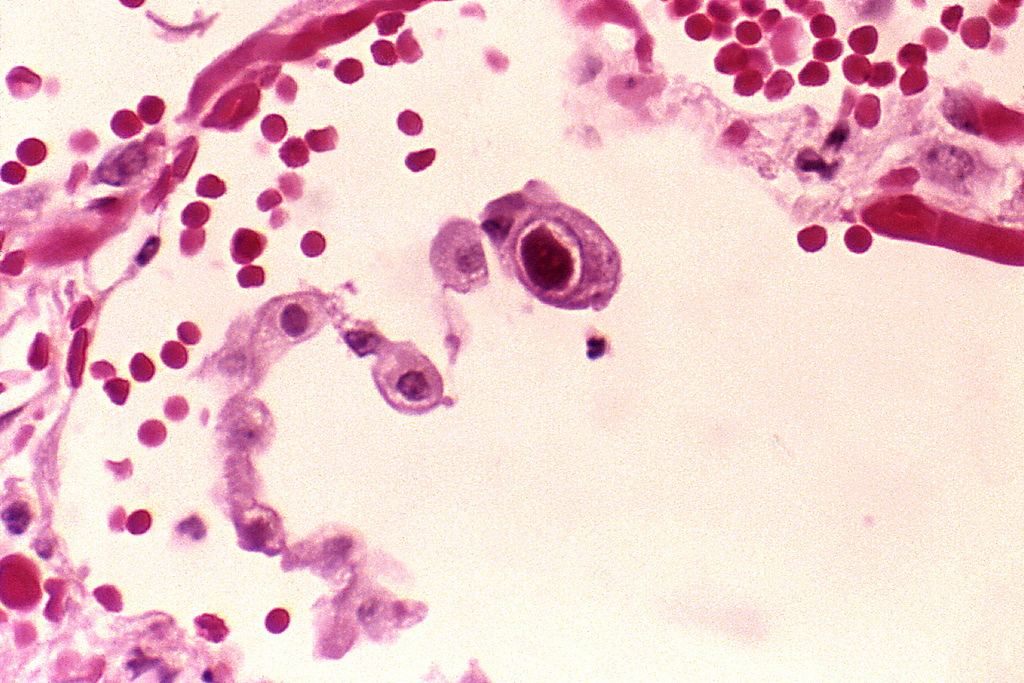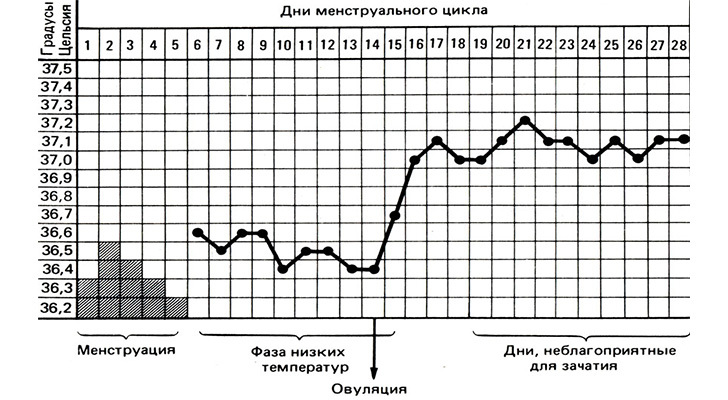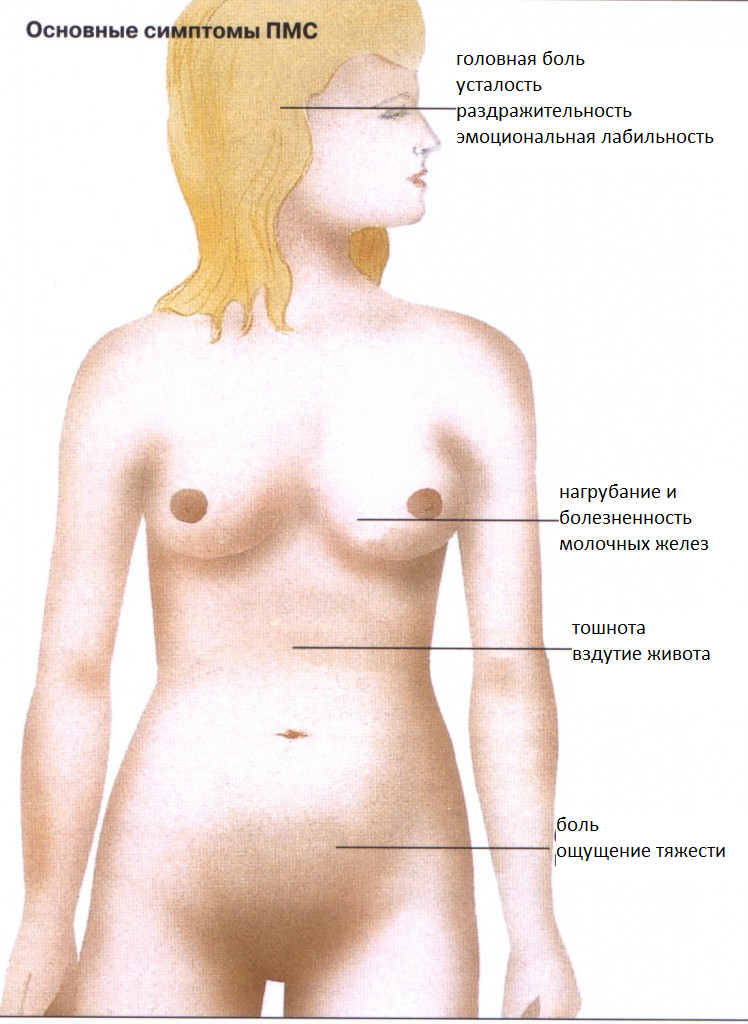Lower abdominal pain in women: causes, nature of treatment
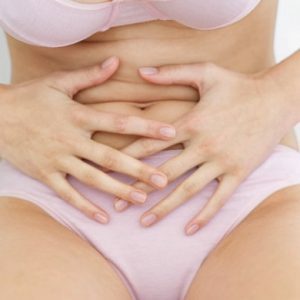 The most vivid symptom of any ill-being in the body is pain.If a moderate weakness, drowsiness and a drop in working capacity, which always appear in ARI, a person can easily tolerate, the pain is perceived by him as an alarm.It can be different in strength, and in nature, and in duration, but in any case, when it appears, a person inevitably thinks about his health.
The most vivid symptom of any ill-being in the body is pain.If a moderate weakness, drowsiness and a drop in working capacity, which always appear in ARI, a person can easily tolerate, the pain is perceived by him as an alarm.It can be different in strength, and in nature, and in duration, but in any case, when it appears, a person inevitably thinks about his health.
Many specialists deal with diseases accompanied by abdominal pains - from surgeons to infectionists.However, there is one category of diseases in which underestimation of symptoms can lead to an exceptionally unpleasant complication - the loss of fertility.It's a tragedy to talk about women's diseases, because of which the reproductive system suffers, and which is not "worse" than appendicitis.
Table of contents: Acute pains Ovarian apoplexy Twisting of the cyst or ovarian tumor ectopic pregnancy Ectopic pregnancy Inflammatory diseasesAcute pain
Acute are those conditions in which a woman without medical assistance inevitably dies in the next few hours. This group includes such diseases as:
- ovarian apoplexy;
- torsion of the leg of the ovarian cyst or tumor;
- ectopic pregnancy with ruptured fallopian tube.
Ovarian apoplexy
With this disease, the pain in the lower abdomen appears suddenly in the middle of the menstrual cycle.It is connected with the fact that when a follicle ruptures, where an egg is ripe, the blood vessel adjacent to it is damaged.Often the onset of pain is associated with sexual intercourse or physical exertion.
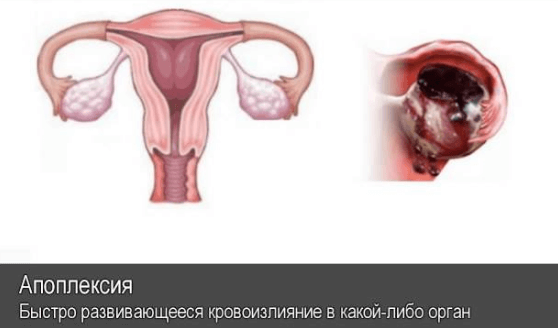
Distinguish painful and hemorrhagic form of apoplexy.The first one has pronounced pain sensations and comparatively low blood loss.It is much less dangerous than hemorrhagic, in which bleeding can quickly lead to the death of the patient.
Additional symptoms:
- weakness;
- dizziness;
- nausea and vomiting;
- syncope
Symptoms appear depending on the intensity of bleeding from the damaged vessel.
Treatment
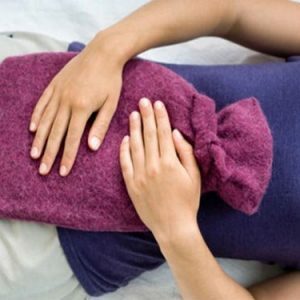 Despite the danger of apoplexy, it is sometimes treated conservatively.With painful form and small blood loss( up to 150 ml), a cold on the stomach, hemostatic drugs, vitamins, antispasmodics are prescribed.
Despite the danger of apoplexy, it is sometimes treated conservatively.With painful form and small blood loss( up to 150 ml), a cold on the stomach, hemostatic drugs, vitamins, antispasmodics are prescribed.
In case of hemorrhagic form of apoplexy or in case of deterioration, a woman is operated according to vital indications.Laparoscopic operations are more common, however, if a massive bleeding is suspected, a normal incision is performed.In this case, the damaged area on the ovary is sutured, and if it is impossible to suture it, the entire organ is removed.
Torsion of the legs of the cyst or ovarian tumor
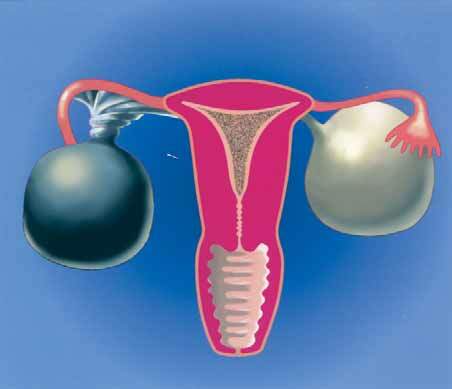 The name itself is the very essence of the disease.Torsion often occurs when a sudden suspension of the rotational movement of the body, for example during a dance or during sports training.
The name itself is the very essence of the disease.Torsion often occurs when a sudden suspension of the rotational movement of the body, for example during a dance or during sports training.
At the same time, blood supply to the cyst or tumor is stopped, necrosis and inflammation begins, which quickly spreads to the pelvic peritoneum, provoking peritonitis.
Pain when twisting occurs suddenly, is localized on the side of the affected ovary, has a spastic character, although it can be permanent.Simultaneously, nausea, vomiting, pallor of the skin, bloating appear.
Treatment
Surgical only.The volume of the operation is determined already in the process, guided both by the condition of the ovary, and by changes that have occurred in the surrounding tissues.
Ectopic pregnancy
In this case, pain also occurs on the side of the lesion.With ectopic pregnancy, a fertilized egg is introduced not into the uterine cavity, but into the fallopian tube or, more rarely, into the ovary.The pain appears on the period of 2-3 weeks, is cramped in character and gives into the rectum.Simultaneously, spotting from the genital tract is noted.
The above symptomatology is characteristic for the interruption of ectopic pregnancy according to the principle of tubal abortion.When the fallopian tube ruptures, the pain becomes severe, there is a sharp weakness, nausea with vomiting, the patient loses consciousness.
Treatment
Exceptionally prompt.Usually, during surgery, the affected uterine tube is completely removed and the bleeding is stopped.With a timely operation, a woman has every chance of survival, and the birth of a child afterwards.
Inflammatory diseases
The second most important cause of the onset of pain in women is pelvic inflammatory disease:
- Endometritis.
- Salpingoophoritis( adnexitis) and its complications:
- pyosalpinx;
- hydrosalpine;
- piovar;
- tubo-ovarian abscess;
- pelvic peritonitis.
- Parameter.
Endometritis
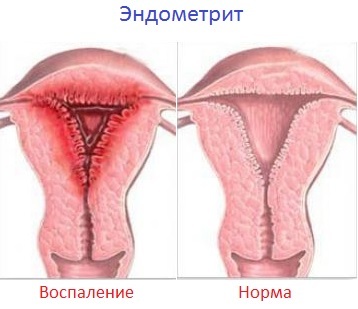 This disease most often begins after an abortive abortion or the introduction of intrauterine contraceptives, although it may occur after delivery.Pain in the lower abdomen is accompanied by a high fever( up to 39-40 ° C), secretion of purulent leucorrhoea.The disease lasts 8-10 days and, with adequate treatment, ends with recovery.
This disease most often begins after an abortive abortion or the introduction of intrauterine contraceptives, although it may occur after delivery.Pain in the lower abdomen is accompanied by a high fever( up to 39-40 ° C), secretion of purulent leucorrhoea.The disease lasts 8-10 days and, with adequate treatment, ends with recovery.
Somewhat less often, acute endometritis can be complicated by parametritis, peritonitis, pelvic abscess, thrombophlebitis of pelvic veins or go into chronic form.
Salpingo-oophoritis
The most common of the gynecological causes of pain in the lower abdomen.In this case, the inflammatory process captures both the ovaries and the fallopian tubes.
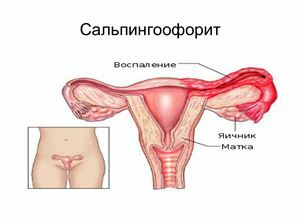 In acute salpingo-oophoritis, the pains are permanent, localized on the affected side and are accompanied by symptoms such as:
In acute salpingo-oophoritis, the pains are permanent, localized on the affected side and are accompanied by symptoms such as:
- high fever( 38-40 ° C);
- tremendous chills;
- nausea, sometimes accompanied by vomiting;
- purulent discharge from the genital tract;
- disorders of urination.
The disease can be complicated:
- pyosalpinx - a pile of pus in the lumen of the uterine tube;
- hydrosalpinx, in which the lumen of the uterine tube is filled with a non-uniform liquid;
- an ovarian abscess, in which the organ tissue melts;As a result, the ovary becomes a kind of pouch filled with pus-pyovar;
- with a tubo-ovarian abscess arising from the melting of adjacent ovary and tube walls;
- with pelvic peritonitis, which occurs when the pus from the abscess breaks into the pelvic cavity;
- by peritonitis - when the purulent process spreads into the abdominal cavity.
Parameter
This disease occurs due to the passage of inflammation from the uterus or its appendages to the peritoneal tissue. The clinical picture of her, in addition to the pains in the lower abdominal floor, includes:
- sharp start;
- extreme temperature rise up to 41 ° C;
- tremendous chills.
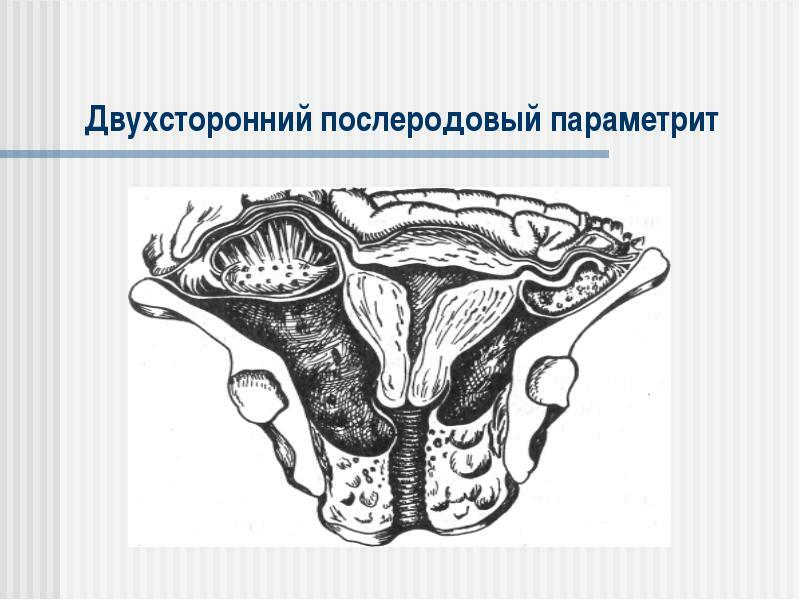
Treatment of inflammatory gynecological diseases
Central to the treatment of inflammatory diseases of the pelvic organs belongs to antibiotic therapy with a wide spectrum of action.It is mandatory to use antipyretic, antispasmodic and analgesic drugs.
With endometritis, irrigation of the uterine cavity is possible with solutions of antiseptics, with pyosalpinx and piovar - puncture of the purulent bladder with suction of its contents and introduction of antiseptics and antibiotics into its cavity.
The operation is performed with pelvic peritonitis, peritonitis and with tearing of the tubo-ovarian abscess.Doctors try to keep the appendages of the uterus, as their removal reduces the woman's ability to bear childbirth.
Other gynecological causes of abdominal pain
There are a number of female diseases, also accompanied by a pain syndrome, which do not pose an immediate threat to the life of a woman, but can lead to unpleasant consequences, such as the formation of adhesions, infertility, uterine bleeding, etc.
These include:
- algodismenorei;
- endometriosis;
- Adhesive disease;
- myoma of the uterus.
Algomenomenorrhea
This word means pain in menstruation.They wear a pulsating, cramping character and often give back or the front surface of the thighs.They occur simultaneously with the onset of menstruation and last usually not more than 2 days.
Treatment
Because psychological factors play a part in the development of pain, psychotherapeutic methods are used to treat algodismenosis patients.Parallel prescribe conventional analgesics.In rare cases, hormonal contraceptives are also used to suppress ovulation.
Endometriosis
Endometriosis is a disease associated with casting the uterine mucosa into areas remote from this organ.When localizing the endometrium parts in the cavity of the small pelvis, there are continual pains associated with menstruation in the lower abdomen.
Treatment
Several approaches to treatment are used in endometriosis:
- surgical removal of the maximum number of foci of endometrial overgrowth;
- hormonal suppression of ovarian activity in order to stop ovulation;
- immune correction;
- symptomatic therapy with analgesics and antispasmodics.
Adhesive disease
This pathology develops as a consequence of inflammatory processes and surgical interventions in the pelvis.Pain with adhesive disease is periodic, pulling, aching, passes after taking analgesics and antispasmodics.
Treatment
Surgical dissection of adhesions.Usually, it is resorted to either with severe pain syndrome, or infertility caused by adhesive process.Conservative measures are ineffective.
Myoma of the uterus
Here in the first place among the symptoms is not pain, but bleeding.Myoma is a benign tumor located in the thickness of the muscular wall of the uterus.If it is present, women suffer from prolonged and profuse menstrual bleeding.A woman feels the pulling pains in the lower abdomen, sometimes pains with uterine myoma are cramping.
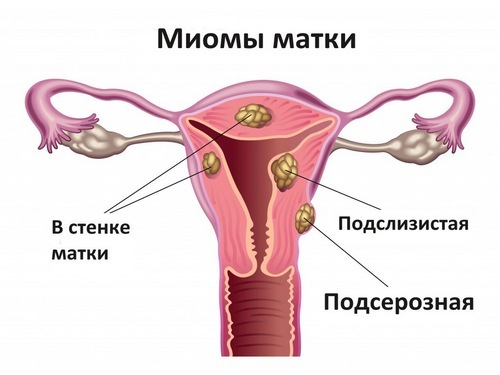
Treatment
Usually consists in prescribing drugs containing female sex hormones.Conservative therapy often leads to a slowing down of the growth of the myomatous node and even its reduction.
In severe, life-threatening bleeding, as well as with large tumor sizes, an operation is shown, during which either the node itself or the entire uterus is removed, if it is impossible to preserve.
Important: With any pain in the lower abdomen, one should not look for folk methods of getting rid of it, but consult a doctor.This symptom appears with dozens of diseases and only a doctor( sometimes not one), armed with knowledge, laboratories and equipment can make an accurate diagnosis and prescribe the right treatment.In some cases, delay can seriously worsen the chances of women to survive, so - no self-treatment.
Find out what other diseases can cause severe pain in the lower abdomen in women, you can by viewing this video review:
Volkov Gennady Gennadievich, medical columnist, ambulance.

